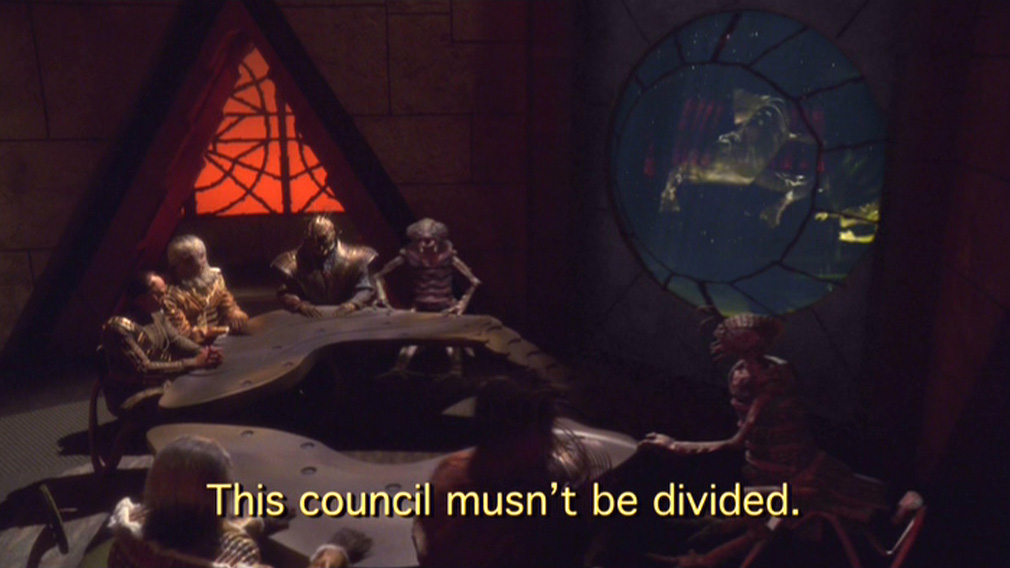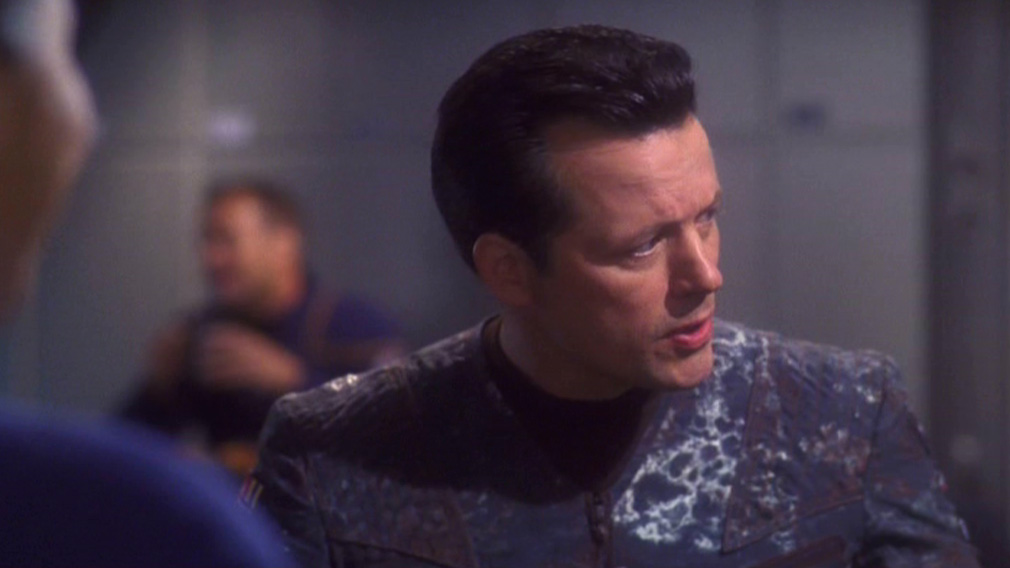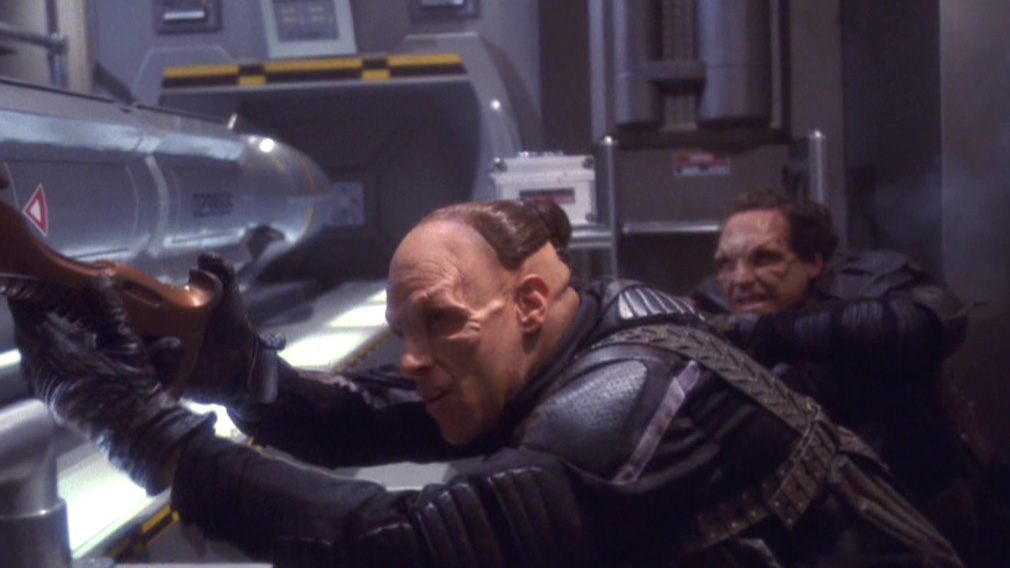
The Xindi: After weeks of searching the Expanse without any sign of the Xindi, the ship finds one on a mining colony, and learns that the Xindi have five different types of species (humanoids, reptilians and some others). Unfortunately, the mining foreman plans to capture the Enterprise crew and use them as slaves. Archer, Trip and the Xindi laborer try to escape and are eventually rescued by a party led by Reed and the new military assault command crewmen (MACOs) introduced in “The Expanse”. The Xindi is mortally wounded in the rescue but gives the crew coordinates to the Xindi homeworld before he dies. When the ship arrives, all they find is a large debris field more than a century old.
Anomaly: The weird effects of the expanse continue to wreak havoc on the ship. After being disabled, Enterprise is boarded by a group of pirates who steal a bunch of supplies, including the antimatter reserves. The ship follows the pirates to a base they’ve set up inside a large, cloaked sphere that is causing serious gravitational distortions (like the anomalies). The crew recovers much of their supplies and Archer learns the pirates recently dealt with a Xindi ship and obtained its database. Archer then tortures a captured pirate for information (eep). The ship has a short battle with the pirates and uploads much of that database — using codes from the captured pirate — providing the crew important information in completing its mission. Archer also returns the pirate, largely unharmed, to his people.

Why it’s important
These episodes set up some key pieces going forward, including the Xindi council (seen at the beginning of the first episode), the weird anomalies in the Expanse, the fact that the Xindi have five different races (humanoids, arboreals, aquatics, reptilians and insectoids) that don’t get along very well and the spheres. The idea that Archer’s mission will require him to bend his morals — hinted at in “The Expanse” — is important, as well. To be sure, what we see in season three is the most troubling extended sequence of Star Trek, even surpassing the darker parts of latter DS9.
What doesn’t hold up
It’s puzzling that the Xindi in the first episode (in his dying breaths) would provide coordinates to his peoples’ homeworld … which has been destroyed for a century. Was he trying to mess with Archer, or did he think the coordinates would somehow be useful? It’s not as if he didn’t know the planet had been destroyed, unless he was more than a century old.
I’d argue that the second episode holds up, even if it paints Archer in a very troubling light. It is odd that Archer would dramatically call up the Xindi database as the episode ends, considering he couldn’t possibly read anything in it. I suppose it did make for a cool shot.

Final thoughts
This is about the point where longtime Trek fans were probably (at best) thinking the series was imitating “24” and (at worst) was completely betraying Trek principles. The first criticism certainly has something to it, and the second criticism is likely valid IF you don’t watch the entire season. “Anomaly”, viewed alone is highly, highly problematic. But Archer’s later actions in trying to make peace with the Xindi (as we’ll discuss) put this more into the “lessons learned” category. In other words, the Enterprise crew acts out of desperation a lot in season three but ultimately doesn’t forget its principles.
Where appropriate in the third season, we’ll combine reviews, similar to what we did with DS9’s final episodes.
Coming later this week …
The Xindi arc continues.
